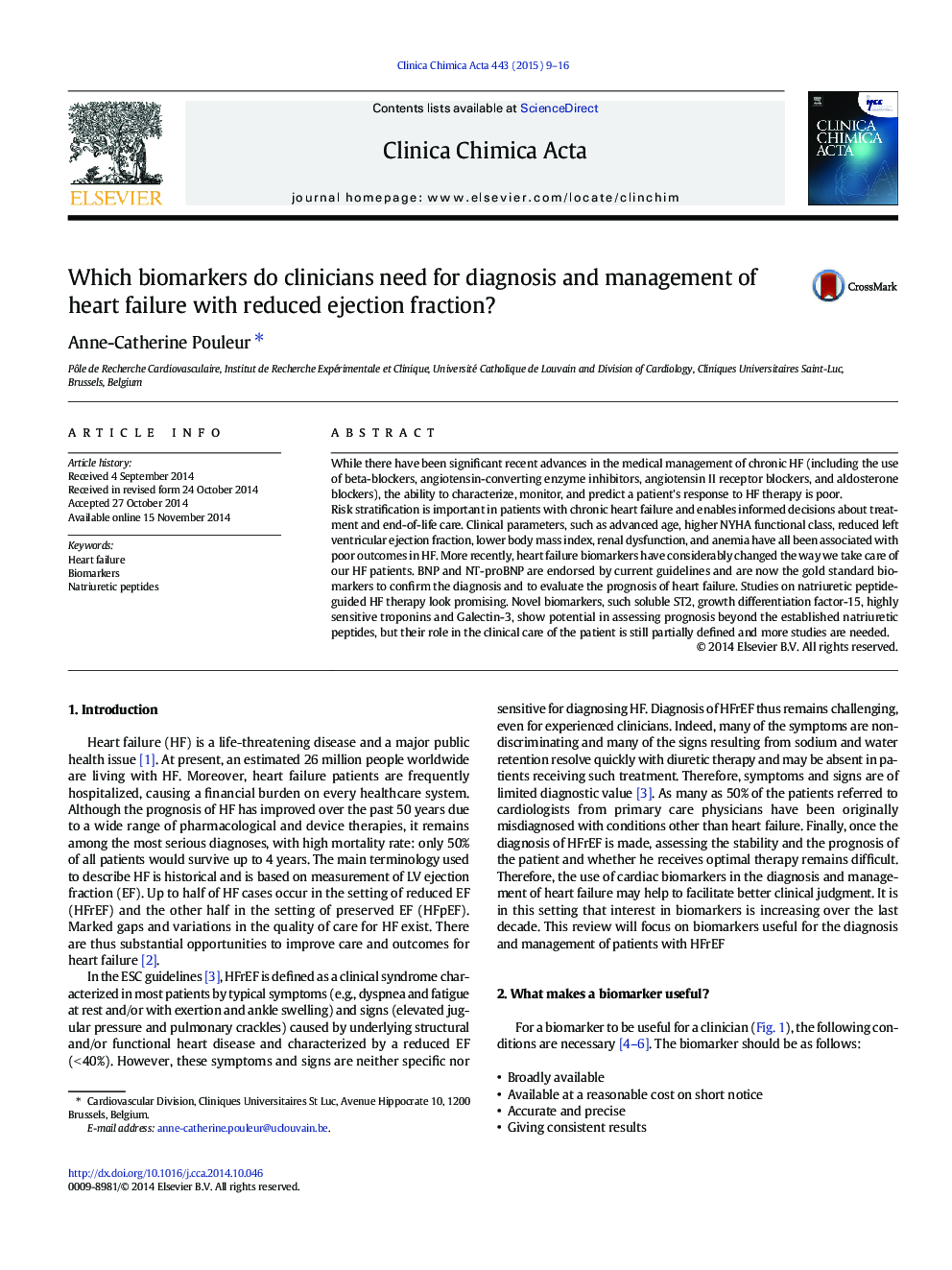| Article ID | Journal | Published Year | Pages | File Type |
|---|---|---|---|---|
| 1965268 | Clinica Chimica Acta | 2015 | 8 Pages |
•BNP and NT-proBNP are the gold standard biomarkers for the diagnosis and prognosis of HF with reduced ejection fraction.•Studies on natriuretic peptide-guided HF management look promising.•Soluble ST2, GDF-15, highly sensitive troponins and Galectin-3, show potential for prognosis beyond natriuretic peptides.
While there have been significant recent advances in the medical management of chronic HF (including the use of beta-blockers, angiotensin-converting enzyme inhibitors, angiotensin II receptor blockers, and aldosterone blockers), the ability to characterize, monitor, and predict a patient's response to HF therapy is poor.Risk stratification is important in patients with chronic heart failure and enables informed decisions about treatment and end-of-life care. Clinical parameters, such as advanced age, higher NYHA functional class, reduced left ventricular ejection fraction, lower body mass index, renal dysfunction, and anemia have all been associated with poor outcomes in HF. More recently, heart failure biomarkers have considerably changed the way we take care of our HF patients. BNP and NT-proBNP are endorsed by current guidelines and are now the gold standard biomarkers to confirm the diagnosis and to evaluate the prognosis of heart failure. Studies on natriuretic peptide-guided HF therapy look promising. Novel biomarkers, such soluble ST2, growth differentiation factor-15, highly sensitive troponins and Galectin-3, show potential in assessing prognosis beyond the established natriuretic peptides, but their role in the clinical care of the patient is still partially defined and more studies are needed.
